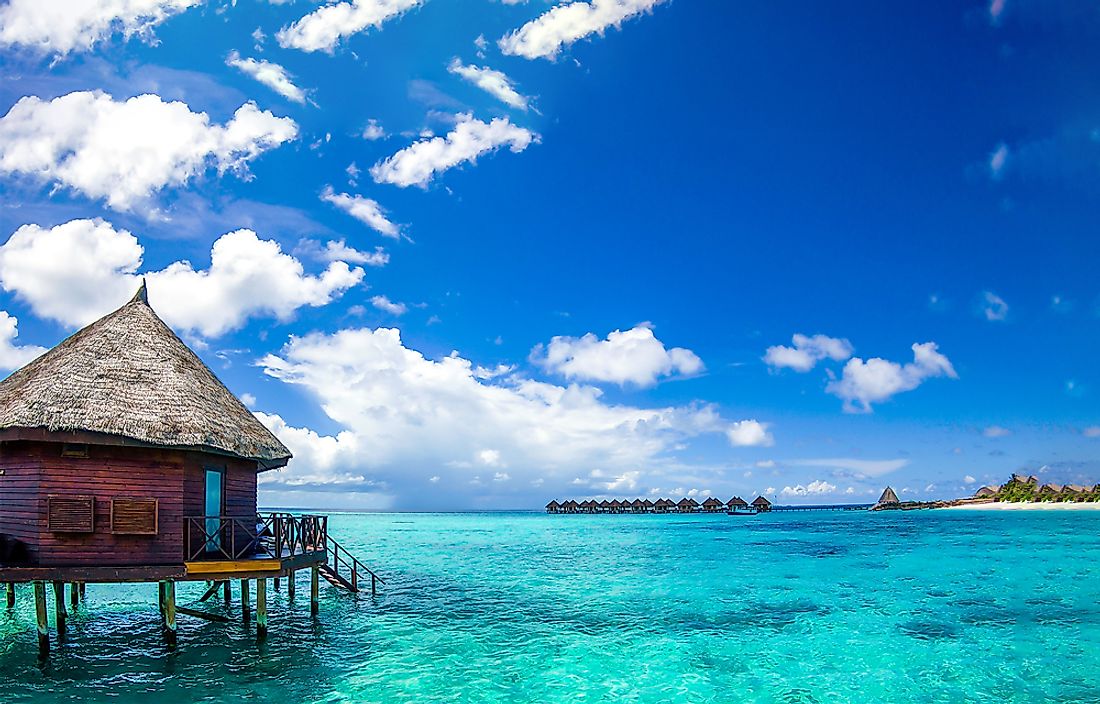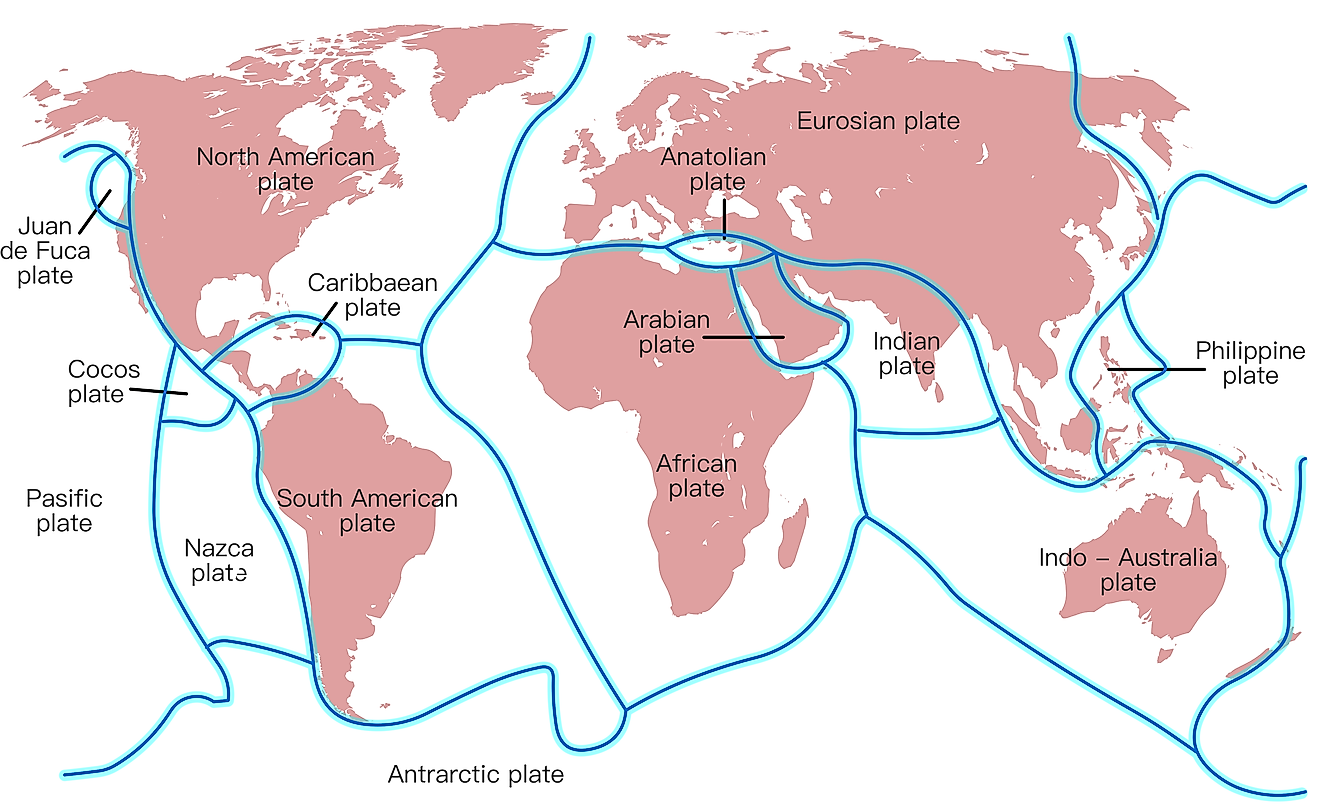Arab Countries
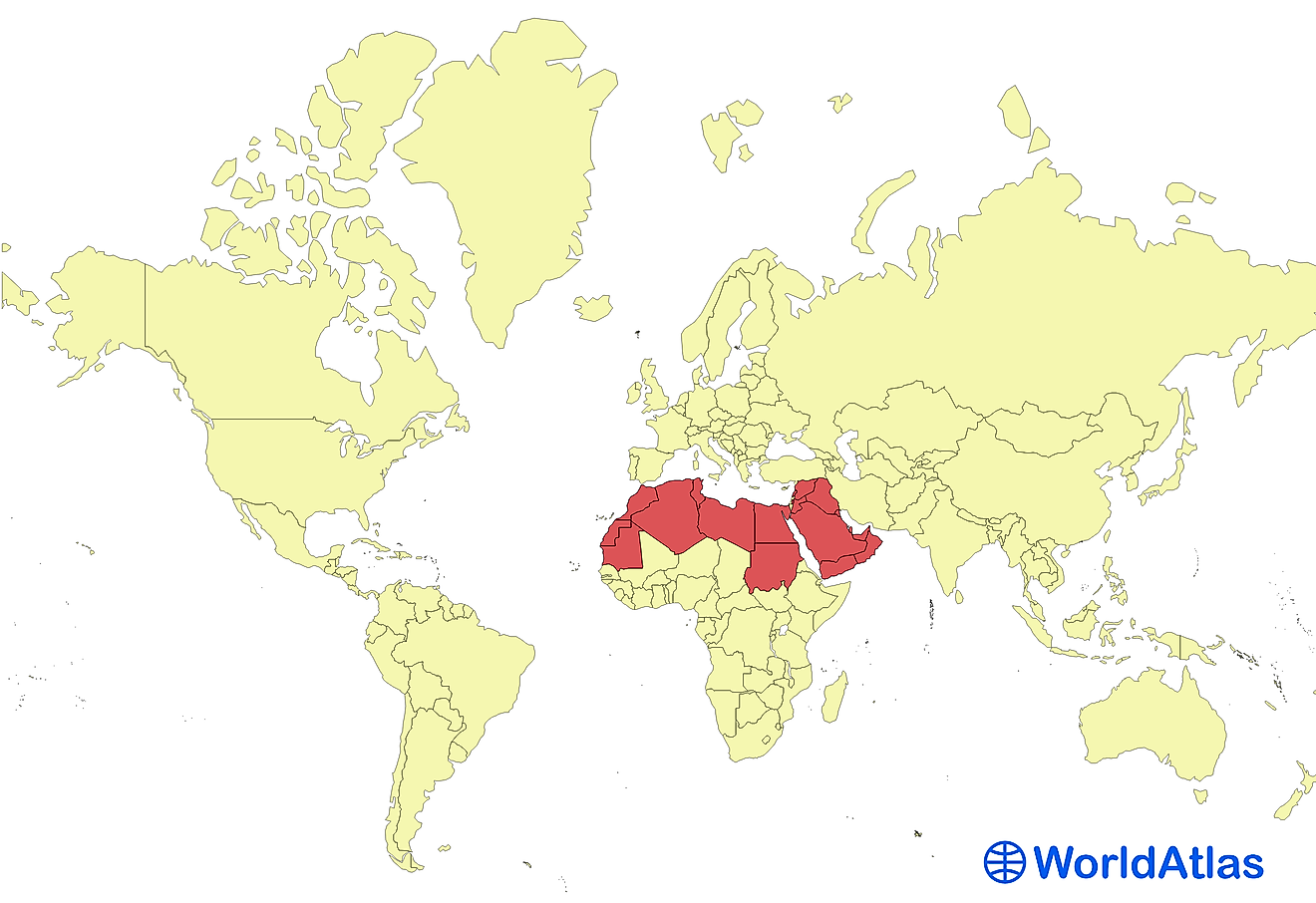
- An Arab country is a country in which most of the population is of Arab origin and/or speaks the Arabic language.
- There are 19 Arab countries spread throughout the Middle East and Northern Africa (excluding Western Sahara).
- Egypt is the most populous Arab country, while Bahrain is the least populous.
- Most of the people in the Arab countries practice Islam as their religion.
- Some ethnic and religious minority populations can be found throughout the Arab world.
The Arab countries are 19 countries located in the Middle East and Northern Africa, in which the vast majority of the population is of ethnic Arab origin and/or speaks the Arabic language (this excludes Western Sahara, which is not internationally recognized as an independent country). Originally confined to the Arabian Peninsula, the Arabs migrated into the Fertile Crescent and Northern Africa, following the Muslim conquests of those areas. For centuries, what now constitutes the Arab countries of the world were controlled by foreign rulers. By the mid-20th century, however, most of the Arab world consisted of independent states. Today, more than 450 million people live in the world’s Arab countries.
The 19 Arab Countries are:
- Algeria
- Bahrain
- Egypt
- Iraq
- Jordan
- Kuwait
- Lebanon
- Libya
- Mauritania
- Morocco
- Oman
- Palestine
- Qatar
- Saudi Arabia
- Sudan
- Syria
- Tunisia
- United Arab Emirates
- Yemen
Origins of the Arab Countries
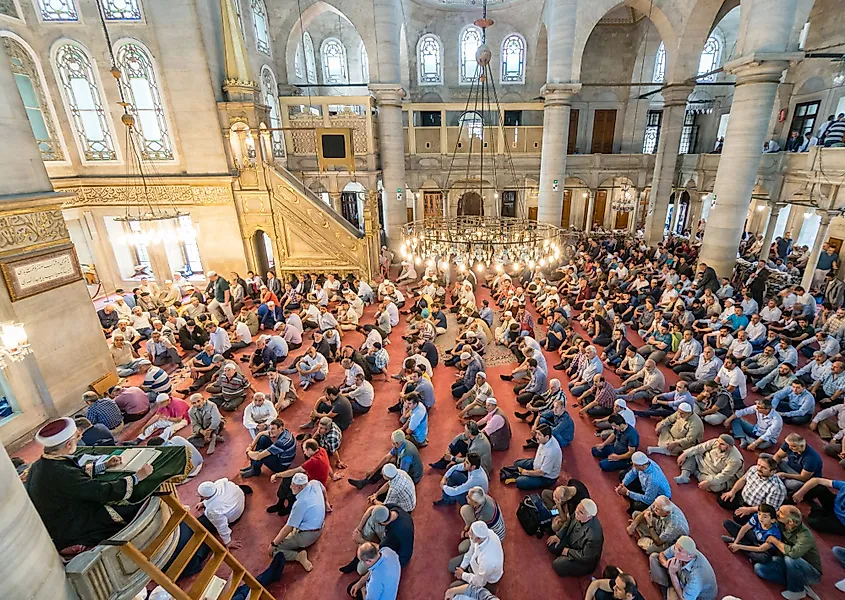
Until the 7th century CE, the vast majority of Arabs lived only in the area of the Arabian Peninsula for which they are named. After the Islamic religion was founded, however, the Arabs began migrating out of their native Arabia. They followed the Muslim conquests that were made following the death of the Prophet Mohammed. Within a few years after Mohammed’s death, the Arabs had conquered the entire Fertile Crescent region. The city of Jerusalem, for example, was captured by the Arabs in 638 CE. The Arab conquest of Northern Africa began two years later. By the end of the 7th century, most of what is now Northern Africa was in Arab hands.
For the next three hundred years, the Arab lands of Northern Africa and the Middle East were governed by a succession of caliphates and other dynasties. In the 11th century, Turkic peoples from Central Asia began migrating into the Middle East. From that point onward, several Turkic dynasties, including the Seljuks, Mamluks, and finally the Ottomans, governed parts of the Arab world. By the late 16th century, the Turkish Ottoman Empire controlled most of the Arab world, and would continue to rule it for the next two centuries.
By the early 19th century, however, Ottoman rule in the Arab lands began to decline. Taking advantage of this decline were European colonial powers. France began seizing control of what became the country of Algeria in the early 19th century. The British wrested Egypt from the Ottomans in the late 19th century. On the eve of the First World War, France was in control of modern-day Morocco, Algeria, and Tunisia, while Italy controlled the territory of what would become Libya.
World War I was the dawn of the Arab independence movement. Indeed, the Arabs of the Arabian Peninsula were a vital ally of the West against the Ottoman Turks during the war. In exchange for the promise of independence, Arab forces in the Arabian Peninsula helped the French and British conquer the Fertile Crescent. After WWI, however, the British and French reneged on their promise to give the Arabs of the Middle East independence, and instead, divided the region between themselves. What would become Syria and Lebanon fell under French rule, while Jordan, Iraq, and Kuwait were placed under British control. The region of the Holy Land, dubbed Palestine, was also made a British mandate, with the intent to establish a Jewish national home therein. The British plan for Palestine enraged the Arabs, and the clash between Jewish and Arab national aspirations would affect the future of the Middle East for a long time to come.
Most of the Arab world would not see independence until after World War II, though Egypt became independent in 1922, followed by Iraq in 1932. The Kingdom of Saudi Arabia, which came to rule much of the Arabian Peninsula, was also formed in 1932. The Fertile Crescent countries of Syria, Jordan, and Lebanon gained independence in the latter half of the 1940s. By the 1960s, the Arab states of North Africa were all free from European rule. The British left Yemen and Kuwait in the 1960s, then bestowed independence on the rest of the countries of the Persian Gulf in 1971.
Demographics of the Arab Countries
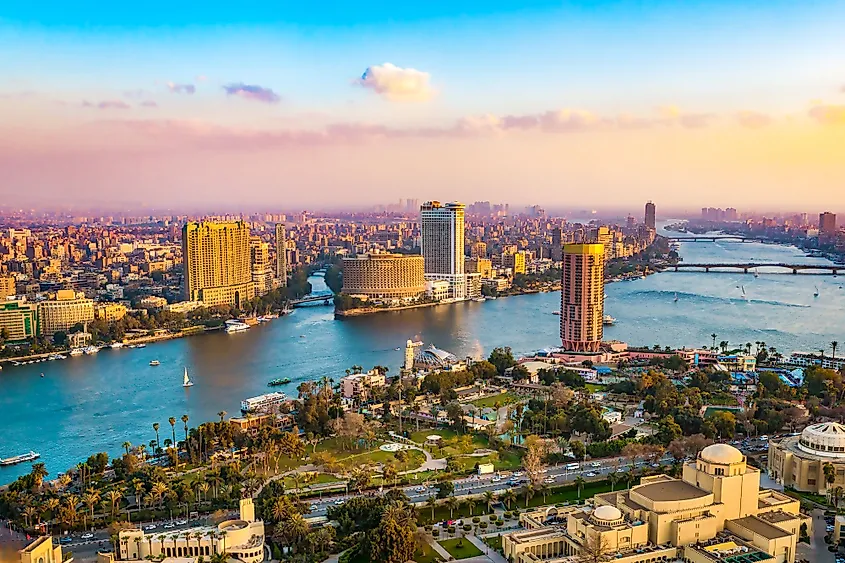
Much of the territory of the Arab states consists of inhospitable desert terrain. Thus, most of the people in Arab countries tend to live close to rivers and other water sources, or on the coasts of some countries. Egypt is the most populous country in the Arab world, with a population in excess of 104 million. The next most populous Arab countries are Algeria and Sudan, which both have populations of approximately 44 million. Bahrain is the least populous Arab country, with a population of 1.7 million. Cairo, the capital of Egypt, is the Arab world’s biggest city, and has an estimated population of 10.9 million.
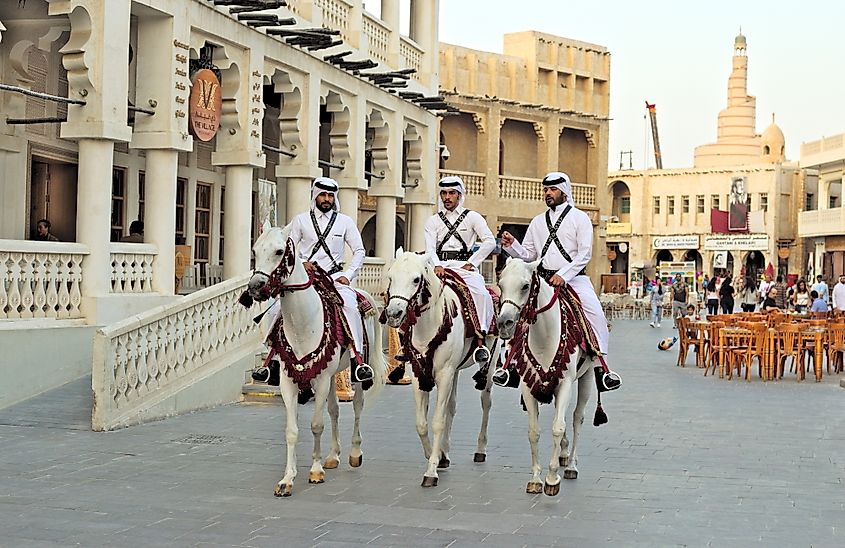
While the Arabs are obviously the most prominent ethnic group in the Arab countries, they are by no means the only one. Several ethnic minorities exist in the Arab countries. There are large populations of Kurds, for example, in both Iraq and Syria. In Northern Africa, the Berbers, who were in the region prior to the arrival of the Arabs, are the most prevalent ethnic minority. In fact, many of the inhabitants of Northern Africa are of mixed Berber and Arab descent. There are also many people of Persian descent in some of the Persian Gulf countries. Several Arab countries, including Morocco, Algeria, Iraq, and Yemen once had large Jewish communities, but most of the Jews living in Arab countries fled or were expelled from those countries following the creation of Israel in 1948.
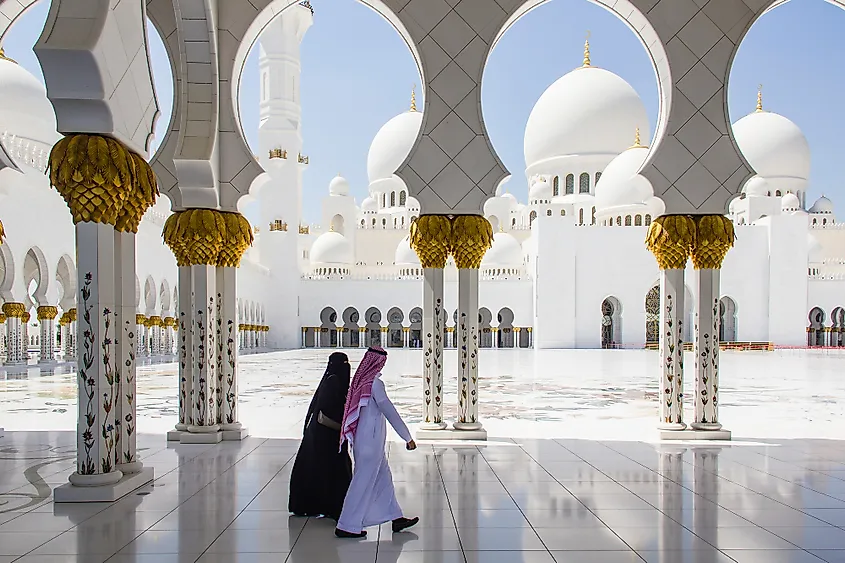
In terms of religion, the people of the Arab countries are overwhelmingly Muslim. Most adhere to Sunni Islam, though the majority of the people of Iraq are Shiites. Large Shiite populations also exist in Lebanon, Syria, and the Persian Gulf countries. The number of Christians in Arab countries has dropped dramatically since the end of the European colonial era. Many Christians have left the Arab world due to the rise of Islamic fundamentalism and religious persecution. There are still, however, large Christian communities in Lebanon, Syria, and Egypt.
Politics of the Arab Countries
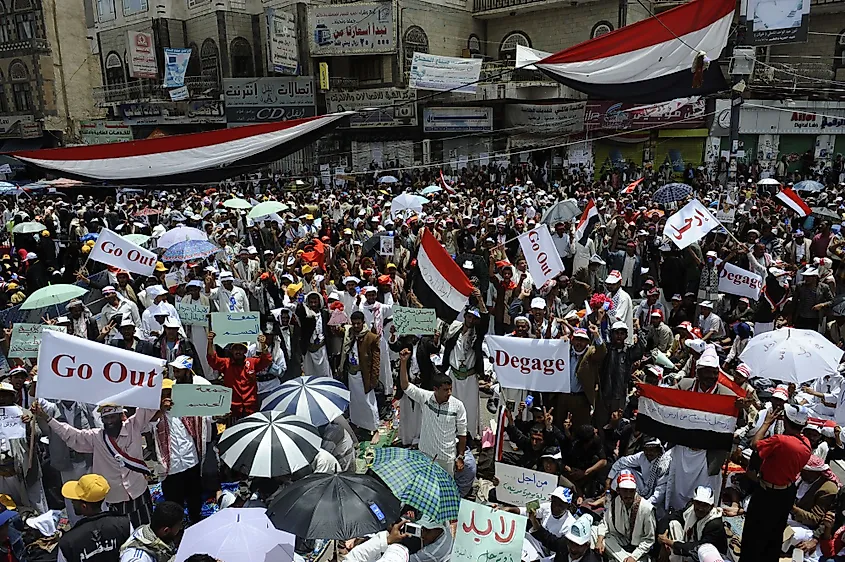
There are various types of political regimes in the Arab countries. Some Arab states, particularly those in the Persian Gulf, are governed by some form of monarchy. In the countries of Kuwait, Qatar, and the United Arab Emirates, the heads of these monarchies are called emirs. Some countries, including Saudi Arabia, Jordan, Bahrain, and Morocco have kings as their rulers. Some of the monarchies in the Arab world do have some provisions for democratic governance. Morocco, Jordan, Kuwait, and Bahrain, for example, all have elected legislatures, though the authority of the monarchs in these countries always supersedes that of any elected body. Saudi Arabia functions as an absolute monarchy. The other countries of the Arab world are republics. Historically, most have been governed as military dictatorships or one-party states. Tunisia, however, became a democracy following the Arab Spring of 2011, though this democracy is still fragile.
The Arab countries have some associations dedicated to cooperation amongst them. One such organization is the League of Arab States or Arab League, which was formed in 1945 to promote the independence of the Arab countries that were still mostly under colonial rule at the time. Today, the Arab League acts as a forum for discussing the main issues affecting Arab countries at any given time. The organization has 22 members, though three of these members, Comoros, Somalia, and Djibouti, are countries that do not have ethnic Arab or Arabic-speaking majorities, and are therefore, technically not Arab countries.
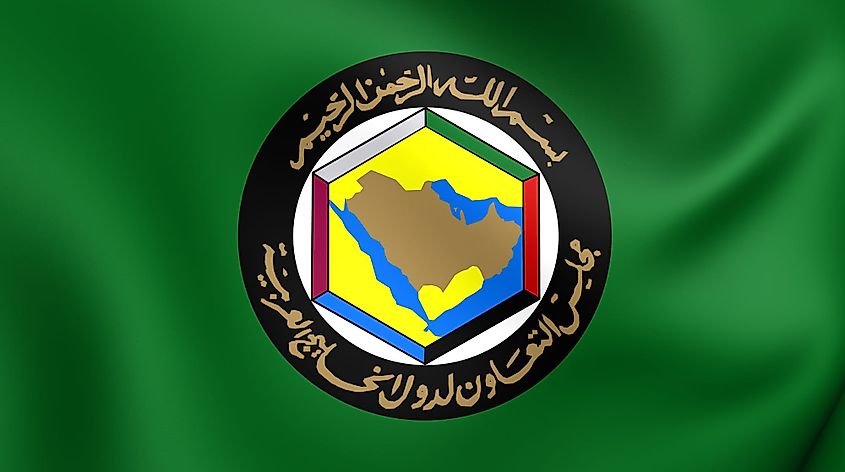
Another important international Arab organization is the Gulf Cooperation Council (GCC). Set up in 1981, the GCC consists of Arab countries that border the Persian Gulf. Its members are Bahrain, Kuwait, Oman, Qatar, Saudi Arabia and the United Arab Emirates. The GCC works to promote the collective security of the Arab Persian Gulf countries. It also works to promote common political and economic interests.










